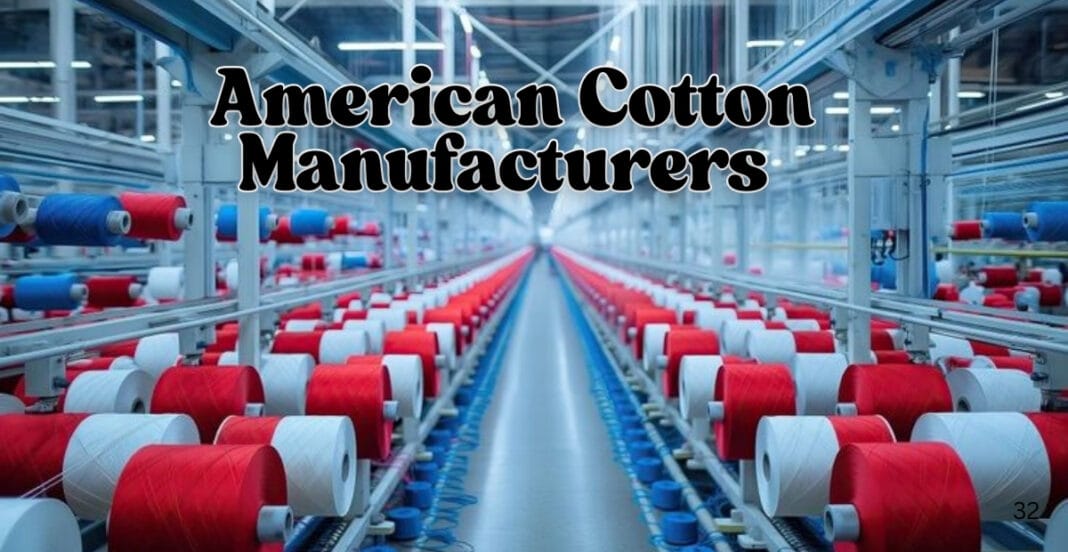American cotton manufacturers have built a legacy of strength and innovation. Over the years, they have adapted to changes and challenges in the global market. Their success today reflects a commitment to quality, technology, and sustainable practices. These manufacturers keep finding new ways to stay competitive, even when global trade becomes tough.
By understanding their journey, we can see how they remain ahead in the cotton game. This article explores their strategies, challenges, and achievements in detail.
Table of contents
- The Global Importance of American Cotton Manufacturing
- A Historical Perspective on American Cotton Manufacturers
- Key Challenges Faced by American Cotton Manufacturers
- Innovative Farming Techniques in the Cotton Industry
- Technological Advances Keeping Cotton Manufacturers Competitive
- How American Cotton Manufacturers Ensure Quality
- Sustainable Practices Adopted by American Cotton Manufacturers
- Role of Research and Development in Cotton Manufacturing
- Trade Agreements Impacting American Cotton Manufacturers
- How American Cotton Manufacturers Navigate Trade Barriers
- Workforce Development and Its Impact on Cotton Manufacturing
- How Logistics and Supply Chains Shape Cotton Trade
- Conclusion
- FAQS
The Global Importance of American Cotton Manufacturing
Moreover, American cotton plays a vital role in the world. In fact, the United States stands among the top cotton producers and exporters. Its cotton is especially famous for high quality and reliability. As a result, many industries, from fashion to home goods, depend heavily on American cotton.
This global influence brings pride and pressure. Cotton manufacturers must work hard to meet international standards. Staying relevant means blending tradition with new approaches.
A Historical Perspective on American Cotton Manufacturers
Indeed, cotton farming and manufacturing have deep roots in America. Originally, the industry began centuries ago, growing steadily over time. Back then, early manufacturers relied on manual labor and basic tools. However, today, they use cutting-edge machines and advanced digital systems.
The journey shows resilience. Despite wars, economic shifts, and global competition, American cotton manufacturers kept moving forward. Their history teaches us that adaptation is key to survival and growth.
Key Challenges Faced by American Cotton Manufacturers
The road to success isn’t always smooth. Cotton manufacturers face several hurdles. Trade tensions, rising costs, and environmental concerns are just a few. They also deal with changing consumer demands and strict regulations.
However, they don’t give up. By identifying challenges early, manufacturers can develop smart solutions. This proactive mindset helps them stay on top, even in tough times.
Innovative Farming Techniques in the Cotton Industry
Interestingly, innovation starts at the farm. For example, American cotton growers use advanced farming techniques to improve yields. Specifically, precision agriculture is a great example. It uses GPS and sensors to monitor crops closely. As a result, this approach reduces waste and boosts productivity.
Better farming means better raw materials. Manufacturers benefit directly from these improvements, helping them deliver top-quality cotton to the market.
Technological Advances Keeping Cotton Manufacturers Competitive
Undoubtedly, technology plays a big role in staying competitive. In particular, modern cotton factories are highly automated. For instance, machines handle spinning, weaving, and quality checks with great precision. Consequently, automation cuts costs and improves efficiency.
Moreover, digital tools track production and supply chains in real time. This transparency builds trust with buyers and partners. Technology truly sets American cotton manufacturers apart.
How American Cotton Manufacturers Ensure Quality
Quality is non-negotiable in global trade. American cotton manufacturers follow strict quality control measures. Each batch of cotton goes through detailed testing. Experts check strength, color, and purity.
Certifications also play a role. Meeting global standards proves that the cotton is reliable. This focus on quality helps manufacturers earn repeat business worldwide.
Sustainable Practices Adopted by American Cotton Manufacturers
Sustainability is more important than ever. American cotton manufacturers are leading the way with green practices. Many have cut down water use and shifted to renewable energy sources. Others recycle waste or use organic farming methods.
These efforts don’t just help the planet. They also appeal to eco-conscious consumers and partners. Sustainability is both a responsibility and a smart business move.
Role of Research and Development in Cotton Manufacturing
R\&D fuels progress. Cotton manufacturers invest heavily in research to discover new materials and methods. They explore ways to make cotton stronger, softer, and more durable. Research also helps tackle challenges like pests and climate change.
By staying curious and innovative, American cotton manufacturers keep pushing the industry forward.
Trade Agreements Impacting American Cotton Manufacturers
Trade agreements shape the cotton market. Deals like NAFTA and USMCA influence how cotton moves across borders. These agreements can lower tariffs or open new markets.
Manufacturers stay informed about these deals. Understanding the rules helps them plan better and avoid surprises. Trade policies can be tricky, but with smart navigation, manufacturers gain big advantages.
How American Cotton Manufacturers Navigate Trade Barriers
Sometimes, trade barriers pop up unexpectedly. These can include high tariffs, import bans, or new regulations. American cotton manufacturers stay flexible to handle these challenges. They diversify markets and build strong local partnerships.
This approach reduces risks and keeps business flowing smoothly, even when barriers rise.
Workforce Development and Its Impact on Cotton Manufacturing
People power the cotton industry. Skilled workers are essential for smooth operations. Many manufacturers invest in training programs. They teach workers how to use new machines and follow best practices.
Happy, skilled employees make a big difference. They help maintain high quality and productivity, keeping manufacturers competitive.
How Logistics and Supply Chains Shape Cotton Trade

Clearly, logistics are the backbone of global trade. Therefore, American cotton manufacturers focus on strong supply chains. Moreover, they work with reliable transport partners to ensure fast, safe delivery.
Efficient logistics save money and build customer trust. Even small delays can harm reputations, so logistics always get top priority.
Conclusion
The story of American cotton manufacturers is one marked with purpose and resilience. They lead the market even today by employing fierce globally competitive strategies fuelled by innovation, sustainability, and quality at every stage of production. Continuous investment in well-planned research and efficient workforce training coupled with smart logistics helps them remain robust in the global market.
From this point onward, American cotton manufacturers will have to be vigilant and maintain sharp reflexes. Market fluctuations owing to consumer needs, trade policies, and regulations on environmental compliance are constant. With proactive forward-thinking aligned to formulate measures focused on these advancements, they strive toward a sustainable boost in success.
The future of the cotton economy appears bright. Under these particular conditions, American cotton manufacturers will not only withstand but will expand to promote global presence in previously uncharted exciting avenues. Read more Top global companies leading cotton production worldwide
FAQS
American cotton ranks high in the quality of its fiber as well as its consistency and strength. Quality control and sophisticated farming ensure it’s s upto international standards.
They depend on innovation, eco-friendly methods, and the latest technology. These measures help cut costs and improve productivity while keeping pace with global demand.
Sustainability helps attract both environmentally conscious consumers and business partners, while also working towards reducing severe impacts on the environment, ensuring enduring success alongside global compliance.


